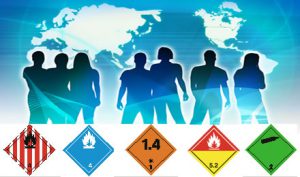
The Global Harmonization System of Classification and Labeling of Chemicals is a system proposed by the United Nations to standardize the labelling of chemicals around the world. The GHS has been in development for many years and is closer to implementation now than ever.
GHS is an international system designed to standardize the communication of hazardous substances according to their health, environmental and physical hazards. GHS is largely based various other standards including HAZCOM (USA), WHMIS (Canada), the EU (European Union) system for preparation, classification and labeling of substances, and the UN TDG (Transportation of Dangerous Goods) system for communicating hazards. GHS is about classification and communication of hazards, not risk management. The adoption of training requirements, worker exposure levels and other risk management detail is left to each country.
GHS is an attempt to harmonize criteria for the classification of substances and mixtures according to their physical, health and environmental hazards as well as for communication elements (including requirements for labels and safety data sheets). The UN lists the purposes of the GHS as:
Enhancing the protection of human health and the environment by providing an internationally comprehensible system for hazard communication; Providing a recognized framework for countries without an existing system; Reducing the need for testing and evaluation of chemicals; and Facilitating international trade in chemicals whose hazards have been properly assessed and identified on an international basis.
The GHS has two main elements: hazard classification and hazard communication.
GHS hazard classification uses four elements: Health hazards; Environmental hazards; Physical hazards; and Mixtures
The GHS hazard communication system involves the use of labels and safety data sheets similar to Hazcom and WHMIS. GHS labels are similar to WHMIS and HazCom labels. The major difference is that GHS labels use health and environmental warning symbols. (The new warning pictograms are visible at http://www.unece.org/trans/danger/publi/ghs/pictograms.html )
Each country is free to decide which, if any, of the GHS classification and communication elements they will adopt. Countries like Canada and the U.S. will likely choose to integrate GHS into their current Hazcom and WHMIS regulations. Countries that don’t have a system can adopt the GHS full scale if they wish.
Simply Safety! incident management software can help protect you and your company by allowing you to be proactive in reducing risk and associated costs and keeping an accurate due diligence trail. Simply Safety! software program replaces paper-based or spreadsheet tracking with a modern efficient way to manage critical compliance data.
Looking for a better way? Call 1 800 862-9939 today to book a 20 minute online web demo of Simply Safety! for your management team!
Visit the Simply Safety! products page.
